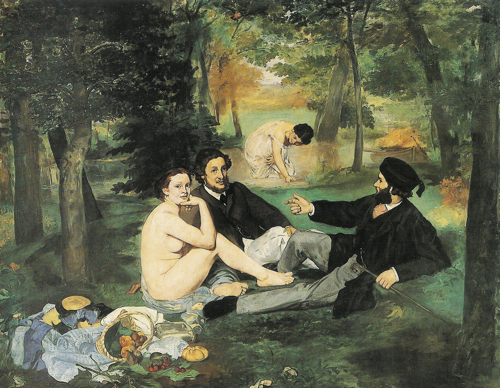Errors! Errors! Errors!

Manet, Le Déjeuner sur l'Herbe (1863) Oil on canvas. Musée d'Orsay, Paris
This is a piece of advice that I need to keep giving in case some newbies on the site have missed it. Even I sometimes forget it but Its importance cannot be overstated and is regularly overlooked in conventional art history. Look for the passages of a great picture or sculpture:
- that don't make sense,
- that look like an error
- are called a failure.
Great artists, we must always remember, are not in the business of painting nonsense and care far too much for their works to include errors, especially errors that you or I can see.
Let me give you an example. Manet submitted his first great masterpiece, now known as Le Déjeuner sur l'Herbe (above), to the Salon des Refusées in Paris as The Bath. That's right. He titled it Le Bain. It doesn't seem to make sense, does it? That's why we now call it something else, a title in tune with conventional perception. It makes more sense, doesn't it? Yet when Manet looked at it, he saw it as The Bath. There are other glaring "errors" too. The bather in the distance is out of proportion, too large for those in the foreground. Then the critics. They have always dissed Manet, father-figure to the Impressionists, for his ineptitude at painting landscape. The woods in the background of The Bath, they cry, were poorly painted in the studio and broadly brushed with little of the finesse applied to the figures in the foreground. Manet messed it up, we are told, by making the figures look like actors on a stage-set or like artists and a model relaxing in a studio. It makes no sense out-of-doors. Too true!
Another painting by Manet in the Metropolitan Museum, New York, has even more "errors", the as-weirdly titled Mlle. V in the Costume of an Espada. Those odd features include a woman dressed as a matador, the wrong-color cape held as though it is light rather than heavy, Manet's use of a motif from Goya instead of inventing one himself....and on it goes.
As you learn about an artist or a painting, reading some text next to the frame perhaps or in a book or article, note down these "errors" because it is only when you can turn these "errors" into intentional and meaningful features that you'll have extracted its core meaning.
For those of you that have not been able to solve the puzzle of these two great paintings and you are in good company, take a look at "Manet's Déjeuner and Mlle V. Simply Explained." The solution, as you will see, is both elegant and simple.
Posted 18 Jul 2012: PosesManetTheoryVisual Perception
The EPPH Blog features issues and commentary.

Reader Comments